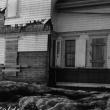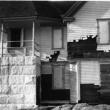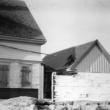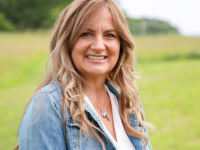Keepers’ Klippings
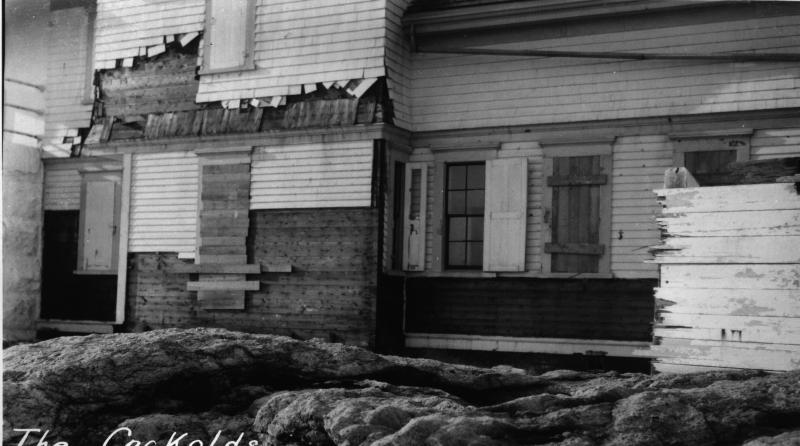 On February 4, 1933, a fierce storm damaged Cuckolds Light Station. Courtesy of the Coast Guard
On February 4, 1933, a fierce storm damaged Cuckolds Light Station. Courtesy of the Coast Guard
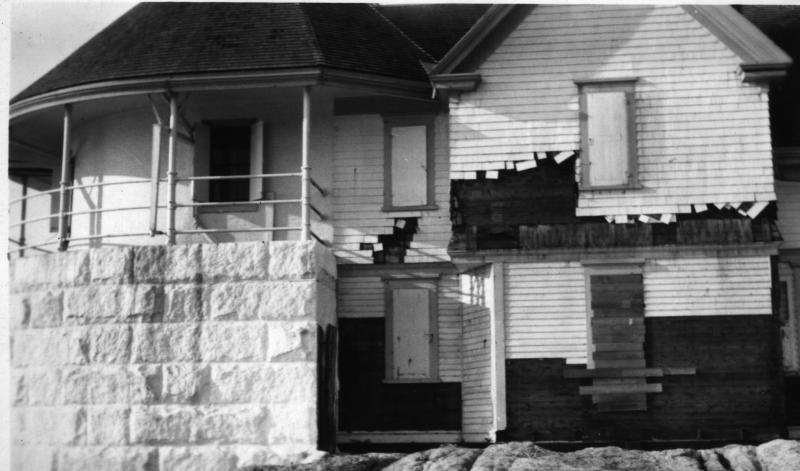 A fierce storm 90 years ago damaged the Cuckolds Light Station. Courtesy of the Coast Guard
A fierce storm 90 years ago damaged the Cuckolds Light Station. Courtesy of the Coast Guard
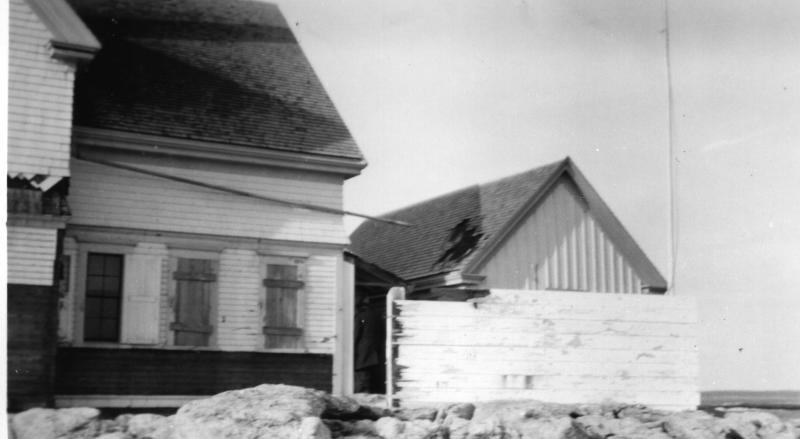 A photo of the damage done at Cuckolds Light Station. Courtesy of the Coast Guard
A photo of the damage done at Cuckolds Light Station. Courtesy of the Coast Guard
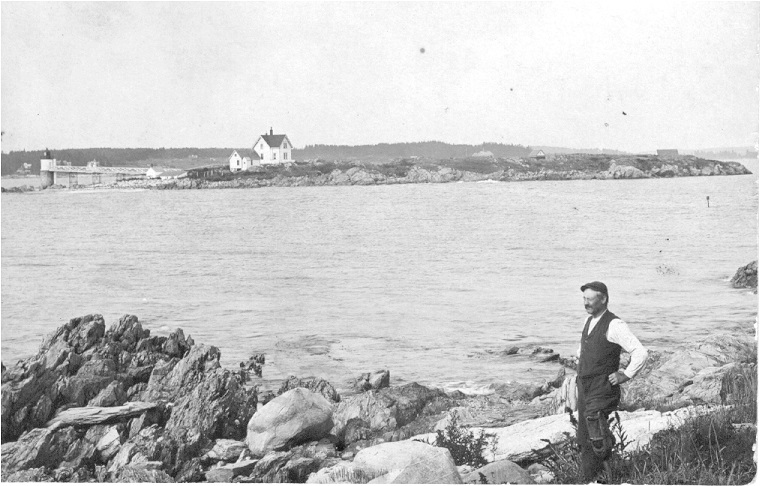 Samuel Cavanor, Ram Island Light’s first keeper. Courtesy photo
Samuel Cavanor, Ram Island Light’s first keeper. Courtesy photo
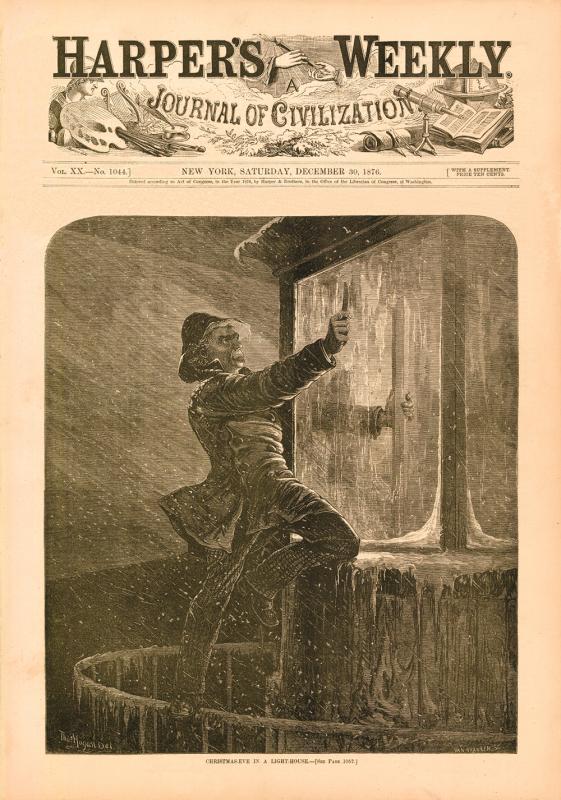 This cover of Harpers Weekly is an excellent engraving of a keeper scraping the lantern's glass. Courtesy photo
This cover of Harpers Weekly is an excellent engraving of a keeper scraping the lantern's glass. Courtesy photo
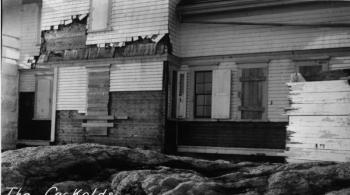 On February 4, 1933, a fierce storm damaged Cuckolds Light Station. Courtesy of the Coast Guard
On February 4, 1933, a fierce storm damaged Cuckolds Light Station. Courtesy of the Coast Guard
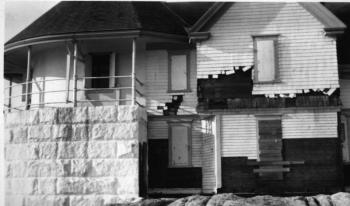 A fierce storm 90 years ago damaged the Cuckolds Light Station. Courtesy of the Coast Guard
A fierce storm 90 years ago damaged the Cuckolds Light Station. Courtesy of the Coast Guard
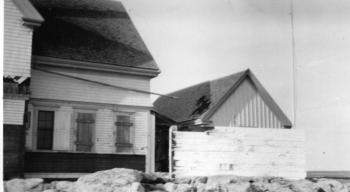 A photo of the damage done at Cuckolds Light Station. Courtesy of the Coast Guard
A photo of the damage done at Cuckolds Light Station. Courtesy of the Coast Guard
 Samuel Cavanor, Ram Island Light’s first keeper. Courtesy photo
Samuel Cavanor, Ram Island Light’s first keeper. Courtesy photo
 This cover of Harpers Weekly is an excellent engraving of a keeper scraping the lantern's glass. Courtesy photo
This cover of Harpers Weekly is an excellent engraving of a keeper scraping the lantern's glass. Courtesy photo
In the 1800s, when the ocean was the highway, the Boothbay region’s four lighthouses (Burnt Island, Hendricks Head, Ram Island, and Cuckolds) served as signposts guiding vessels safely in and out of port. At a time when the nation’s economy revolved around maritime trade, sea captains, sailors, and fishermen depended upon lighthouses for safe homecoming and harborage. Today, these same lights are primarily viewed by visitors on tour boats, who can only imagine what life was like for the lighthouse keepers and their families as they pass the stations.
As the “new-age” keeper of the Burnt Island Light, I spent 24 years as its steward, participating in its transformation from a set of abandoned buildings to a fully restored station in time for its bicentennial in 2021. While repurposing the historic site into an outstanding educational and recreational facility for the public’s enjoyment, I located 14 of its former lighthouse keepers and the families of others dating back to 1849. Also, as an active member of the lighthouse community, I had the opportunity to meet others who served in the region. Thus, first-hand interviews, logbook accounts, newspaper clippings, and my own experiences as a keeper will become the basis of the “Keepers’ Klippings” series.
In this initial writing, I am introducing you to a few of the Boothbay region’s lighthouse keepers, with others to be included in future segments. I will cover daily life, administrative demands, destructive storms, local shipwrecks, resident ghosts, and more. However, before I connect - or reconnect - you with local history, I’d like to acquaint you with the administrative history of lighthouses from its inception to present.
On August 7, 1789, President George Washington signed the Ninth Act of the U.S. Congress that transferred twelve lighthouses from colonial states to its newly created federal agency called the U.S. Lighthouse Establishment. On that date, Maine was part of Massachusetts and the construction of Portland Head Light was underway, so congressmen authorized its completion with an appropriation of $1,500. As commerce expanded, so did future allotments for support of additional lighthouses, lightships and buoys along our seacoasts, Great Lakes and waterways. The nation’s growth, new technologies, and politics in general saw the government’s management of lighthouses transfer to the U.S. Lighthouse Board (1852), U.S. Lighthouse Service (1910) and U.S. Coast Guard (1939).
Lighthouse keeping wasn't an easy existence for keepers and their families with some residing on barren rock more than 20 miles out to sea (Mt. Desert Rock & Matinicus Rock). Early keepers called “wickies” (from the task of trimming the lamp’s wick) worked long, hard hours to keep their light(s) and fog signal in operation 365 days of the year. The weather was often inclement, with storm waves battering and damaging their residence and boathouse. When seas permitted, keepers within rowing distance tried to go ashore at least once a week for mail, food, and supplies, while their wife and children made the best of living in isolation.
In the early years, local men usually served as keepers, earning a meager wage of around $300 per year. The surnames of Auld, Chandler, Grover, Marr, McCobb, and McKown, may be familiar to you as either a relative, local business, street name, or the family that discovered the 1831 sea serpent on its shore. These men were most likely nominated for lighthouse keeper positions based on testimonials that exemplified their character, qualifications, and good-standing as citizens of the community.
While other keepers were appointed for exemplary military service, as a political favor, or, in the case of Samuel Cavanor, as compensation for the loss of a leg in a buoy tender accident. A native of Nova Scotia, he assumed the position of Ram Island Light’s first keeper on October 17, 1883. His November 5th logbook entry read, “I light the light under my charge for the first time.” According to lighthouse machinist William K. Larkin, Jr., his wooden leg didn’t slow him up a bit and he described Cavanor as being “the most active keeper on the coast of Maine, pegleg or not.”
Keeper James A. McCobb of Burnt Island Light fought to remain at his post due to pressure from a local gubernatorial candidate. In his January 3, 1870 letter to friend George Beath, he wrote: “How long I shall remain on Burnt Island is a matter of doubt. There has already been an effort made to have me removed. Tom Boyer (you know Tom is always poking his nose in everybody’s business) has been trying to get me out of here to make room for his brother Alex, but as you see has not yet succeeded and from appearances I think he will hardly make the riffle.”
Despite a modest income, lighthouse keeping was always considered an honorable profession with benefits of a boat, free housing and spectacular views out every window. The job was a family affair with all of its members trained to perform the duties in case the keeper took ill or was off station when the fog rolled in. As a result of that familiarity, the profession has been known to “run in the family” with fathers, sons, grandsons and extended family members following in their relatives’ footsteps.
A Southport family with “lighthouse fever” in their blood was that of Jaruel Marr. In 1866, after he returned home from the Civil War, Jaruel was appointed keeper of the Hendricks Head Light in compensation for his wounds and imprisonment time. On July 1, 1895, his son Wolcott Marr wrote the following in the Hendricks Head logbook: "Arrived at this station at 2 PM to relieve Mr. Jaruel Marr, who has been keeper here for the past 29 years." Wolcott remained at Hendricks Head Light until 1930 and holds the distinction of it being his place of birth, marriage, and death. In total, this lighthouse family provided 64 years of continuous service to mariners plying the waters of the Sheepscot River, while Jaruel’s other sons Clarence and Preston attended to the Cuckolds as a fog signal station and later as a lighthouse.
The character of a lighthouse keeper can vary depending on the individual, but some common traits include being responsible, dedicated, resourceful, handy, self-motivated, physically fit, and knowledgeable about the sea. Also known for courage and bravery, keepers often worked in dangerous conditions and faced challenges of storms, shipwrecks and drownings.
On February 4, 1933, a northeast gale raised havoc at the Cuckolds Light Station for Keeper Edward Eliot and relief keeper Earle Macauley of Boothbay Harbor, who was substituting for Assistant Keeper Harold Seavey. Eliot reported the frightening, two-day experience of heavy seas pounding against the dwelling as: “The bulkhead was broken down by the seas and driven into the east side of the house, breaking out all windows but one on the lower floor and also broke through the thick wall in the dining room, flooding the rooms all day with water. The keepers made temporary shutters and put on the windows toward night when the tide was low and they could work without being washed over by the seas.” Fearing for their lives, they must have all taken refuge in the granite-based tower to wait out the storm as brutal waves threatened to destroy their home.
Offshore stations like the Cuckolds and Seguin were foggy outposts, each manned by a keeper and an assistant or two. The tiered hierarchy of Keeper, 1st Assistant and 2nd Assistant was needed for 24/7 coverage when the fog-signal machinery was in operation. As Assistant Keepers learned the tricks-of-the-trade, they were promoted up or transferred out to a station to call their own. If any keeper was unhappy with an assigned location, they could request a transfer, but approval was based on vacancies and proficiency reports. In general, keepers of the old U.S. Lighthouse Service were career men with some remaining on a site for 20-30 years. While within the U.S. Coast Guard, the enlistment period was shorter and servicemen received different assignments within the agency.
Automation of our nation’s lighthouses began in the 1960s with the use of a dusk-to-dawn light sensor to control the beacon, a lamp changer to replace burnt bulbs, and an automatic fog detector to control the foghorn. The benefits of an unmanned station are reduced labor costs for the government, increased operational efficiencies, and improved safety for the keepers once stationed in remote and dangerous locations.
As one of the last in the nation to become automated, the Burnt Island Lighthouse lost its last keeper on October 7, 1988. However, before Keeper Henry “Hank” Sieg, Jr. and his wife Jeanne closed the door to their home and a way of life that they truly loved, they penned these logbook entries. Jeanne wrote: "The light may lose its keeper, but it will never lose its peace, its beauty, its charm, and its grace." While Hank wrote: "Goodnight light, for the last time. I sure will miss you!" Little did he know at that time that he would return as a volunteer interpreter for the “Return of the Keepers” living history program sponsored in 2022 by the Keepers of the Burnt Island Light, a local nonprofit organization.
The last few decades have brought into being a whole new variety of keeper – the U.S. Coast Guard Aids to Navigation crews who maintain the lights and foghorns and the preservationist who works incessantly to save the historic buildings. Like the lighthouse keepers of old, their work is difficult but necessary, for they have taken upon themselves the tasks for keeping the lights burning for generations to come.
Future “Keepers’ Klippings,” supported by Lighthouse Education & Nautical Studies, L.E.N.S., (lighthouseeducation.org) will provide additional accounts of the Boothbay region’s lights and the men and women who served them. For more, be sure to follow the Boothbay Register in print and online.
Science teacher and retired Education Director at the DMR Elaine Jones has been recognized for her vision, dedication and 30 years of public service. She designed the Maine State Aquarium and acquired/repurposed the Burnt Island Light Station, where students, teachers and visitors alike shared hands-on learning through interactive exhibits and living history programs. Her passion for teaching continues as founder of the nonprofit Lighthouse Education & Natural Studies (LENS).






